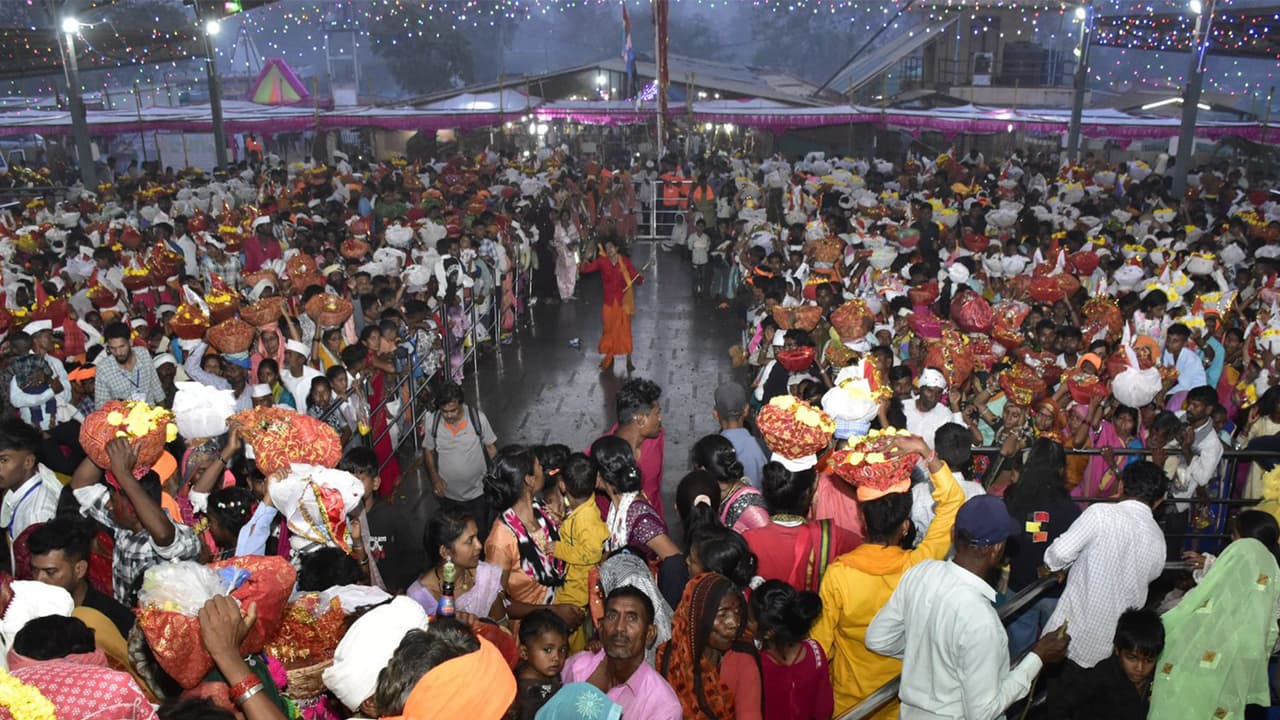Prime Minister Narendra Modi will visit the Yaha Mogi Mata Devmogra Dham in Gujarat’s Narmada district. The visit is part of the national-level Janjatiya Gaurav Divas celebration, marking the 150th birth anniversary of tribal hero Birsa Munda.
Prime Minister Narendra Modi is set to visit the Yaha Mogi Mata Devmogra Dham in the Satpura Range, said the Gujarat CMO on Thursday. Inspired by PM Modi, this year, the grand celebration of the 150th birth anniversary of the people’s hero of the tribal community, Bhagwan Birsa Munda, is being held across the country, including Gujarat.
To celebrate the valour, sacrifice, and cultural heritage of the tribal community, the Prime Minister decided to commemorate November 15 as ‘Janjatiya Gaurav Divas’. This year, the national-level celebration of Janjatiya Gaurav Divas will take place under the chairmanship of the Prime Minister at Dediapada in Narmada district of Gujarat. During his visit to the Narmada district, the Prime Minister will offer prayers at the famous Yaha Mogi Devmogra Dham.
The Sacred Shrine of Devmogra Dham
The Gujarat CMO said that the temple of Pandori Mata (Yahamogi), the clan deity of the tribal community, is located at Devmogra in Sagbara taluka of Narmada district. In this shrine, the self-manifested Yaha Pandori Devmogra Mata has been enshrined as Kani-Kansari since time immemorial. The tribal communities from Gujarat, Maharashtra, Madhya Pradesh, and Rajasthan worship Yahamogi Pandori as their clan deity with immense devotion, reverence, and faith. This sacred ‘Heladab’ has held a unique spiritual glory since ancient times.
The Legend of Kani-Kansari
Thousands of years ago, when this region faced a severe drought, the Goddess herself resided at Devmogra Dham. Due to the devastating drought, food and water became scarce, and animals, birds, and people alike were suffering. During this challenging period, Gorya Kothar, the guardian of the people in this region, began distributing essential grains. However, as time passed and the grain stores of Gorya Kothar, too, began to empty, his foster daughter Yaha Pandori assumed the form of Kani-Kansari and took charge of distributing food grains. Since then, the grain stores have never run empty. From ancient times to the present day, the Goddess’s granaries have always remained full for all of humanity.
At this temple in Devmogra village of Sagbara taluka, lakhs of devotees across generations have arrived with faith in their hearts, seeking solace from their sorrows and answers to their difficulties at the feet of the Goddess. The temple priest invokes the Goddess and offers blessings, praying for the well-being of every individual. It is believed that anyone who comes weeping before the Goddess returns with a smiling and comforted heart.
Unique Traditions and Festivals
Gadh Yatra and Agricultural Forecasts
The grand Gadh Yatra (fort procession) is organised every year on Mahashivratri at Devmogra, the abode of Raja Pantha-Vinadev. In this procession, the Goddess (Mataji) is traditionally taken with musical instruments and dance to bathe in a natural spring situated amidst the forests and mountains of the fort. Furthermore, after worshipping the Goddess, the forecast for the coming year’s agriculture, rain, and weather is taken by performing a ritual. Thousands of devotees plan their agricultural activities for the year in advance based on this forecast.
During the fair, the Kakal tree in the courtyard of the Goddess miraculously blooms overnight. In the morning, devotees witness these flowers, and they believe that the direction which has the most flowers will experience the best agricultural yield throughout the year. According to the Gujarat CMO, the fair, held for five consecutive days every year from Maha Vad Amas and the day before Mahashivratri, presents a unique display of tribal folk culture. Millions of devotees gather to seek the Goddess’s blessings, creating a truly joyous scene. To the left of the main shrine, devotees also reverently worship the dark-complexioned idol of Mahakali Mata. Thus, two Goddesses are enshrined in the same temple.
The ‘Hob Yatra’ Harvest Offering
For thousands of years, the tribal community has upheld its unique tradition, in which they reverently place the new harvest in a bamboo basket. They tie bundles of vegetables and worship items (called ‘hiri’ or ‘hijari’) and carry them on their heads. Dressed in vibrant attire, women adorned with gold and silver jewellery, they set out on the festive Hob Yatra, accompanied by music and celebration. After observing a month-long vow and worship, they offer grains to Yaha Pandori Devmogra with deep devotion and only then consume the new harvest. Thus, Devmogra Dham is not just a shrine; it is a living symbol of the faith, traditions, and culture of the tribal community.
Devmogara Dham is not merely a pilgrimage site, but a living symbol of the faith, tradition, and culture of the tribal community.
Holi-Dhuleti and ‘Gheriyas’ Performance
During the Holi-Dhuleti festival, local Gheriyas (folk performers) leave their homes for over a month, going from house to house, forming groups and performing with heartfelt enthusiasm. Adorned in vibrant attire representing the nine rasas (emotional flavours), they sing and dance with joy. On the eve of Holi, the sacred fire is lit at Holi Chowk, and women, dressed in traditional costumes, join the celebration by singing Lole (folk songs of Holi), dancing to musical instruments, and rejoicing in the festive spirit. (ANI)
(Except for the headline, this story has not been edited by Asianet Newsable English staff and is published from a syndicated feed.)
